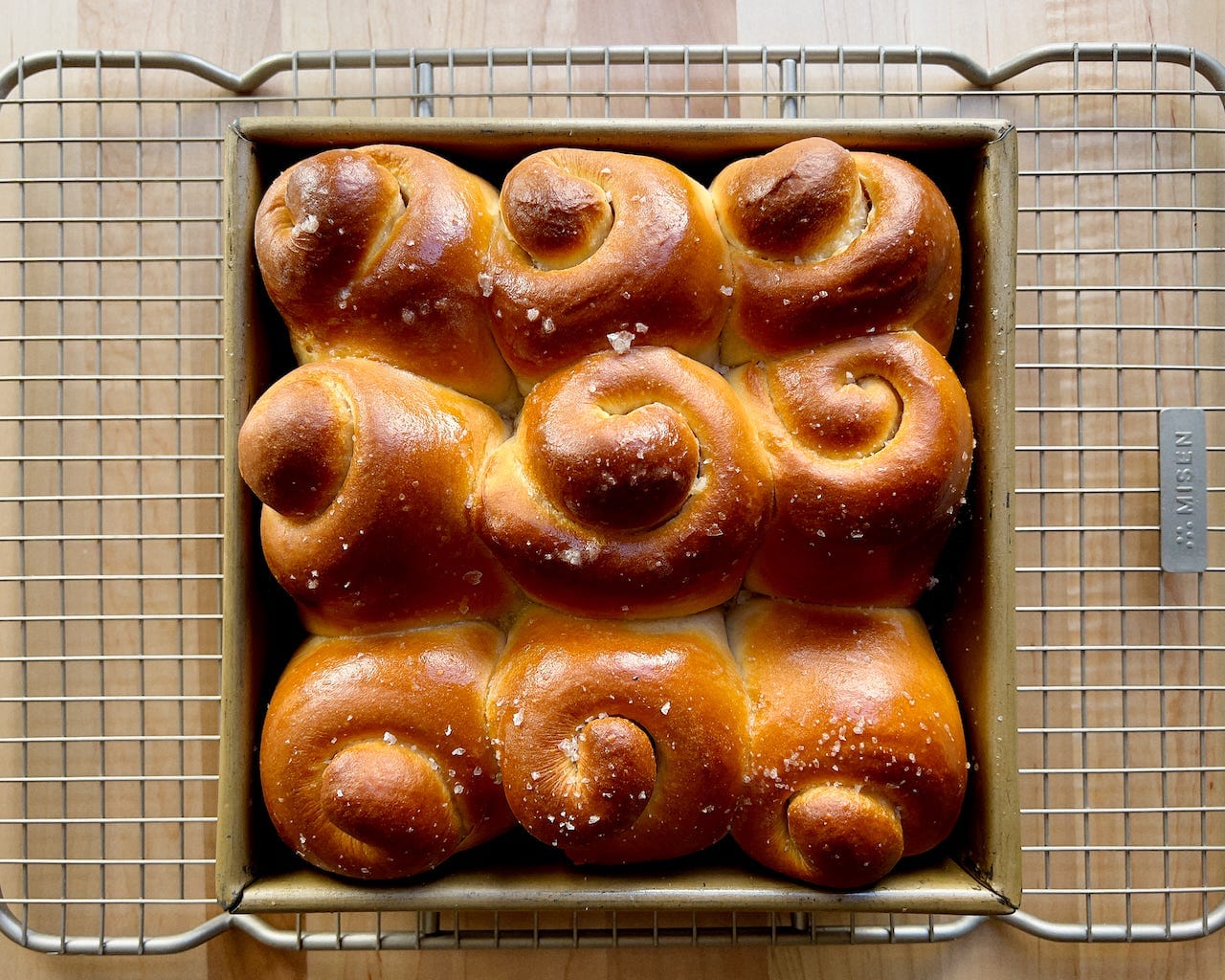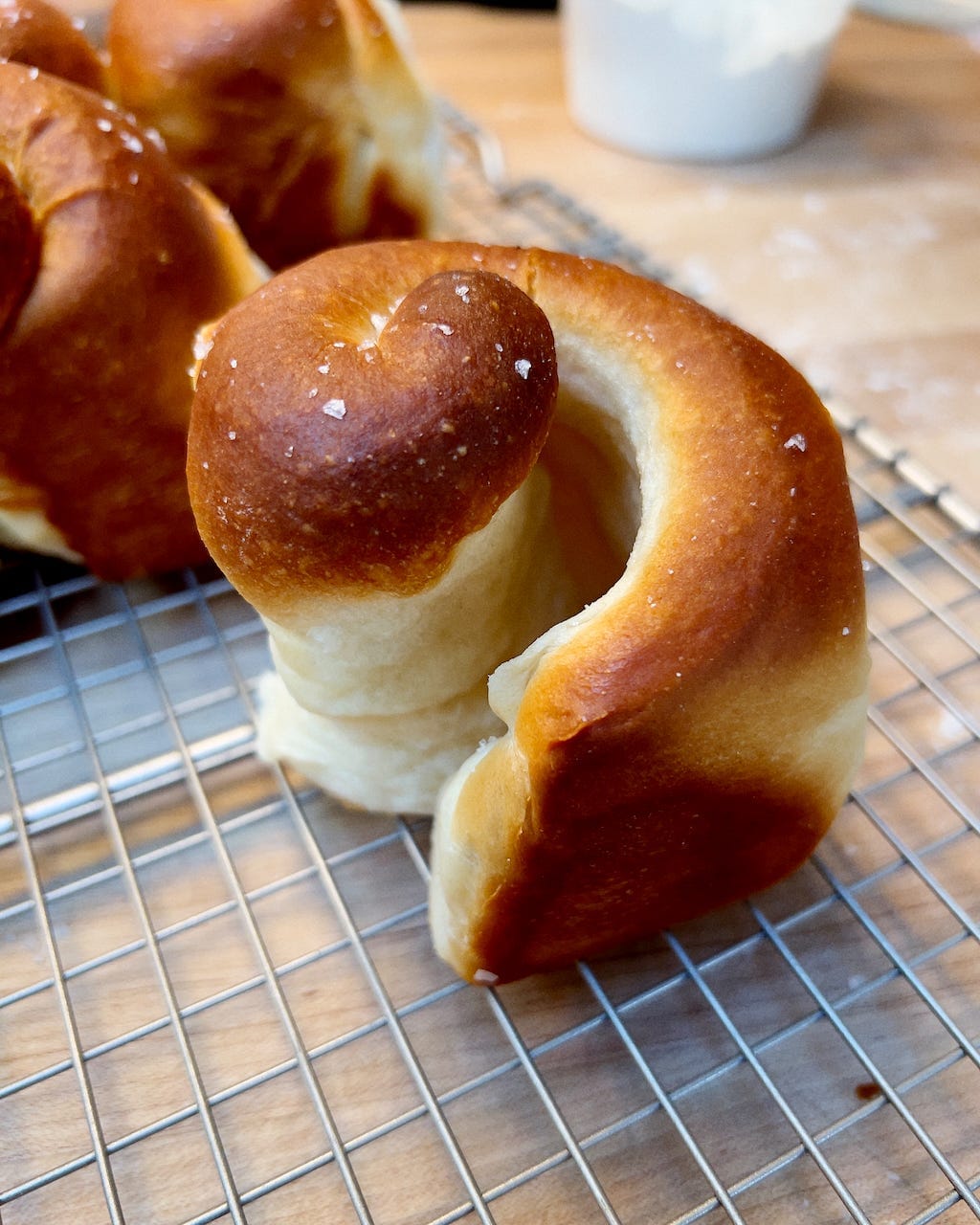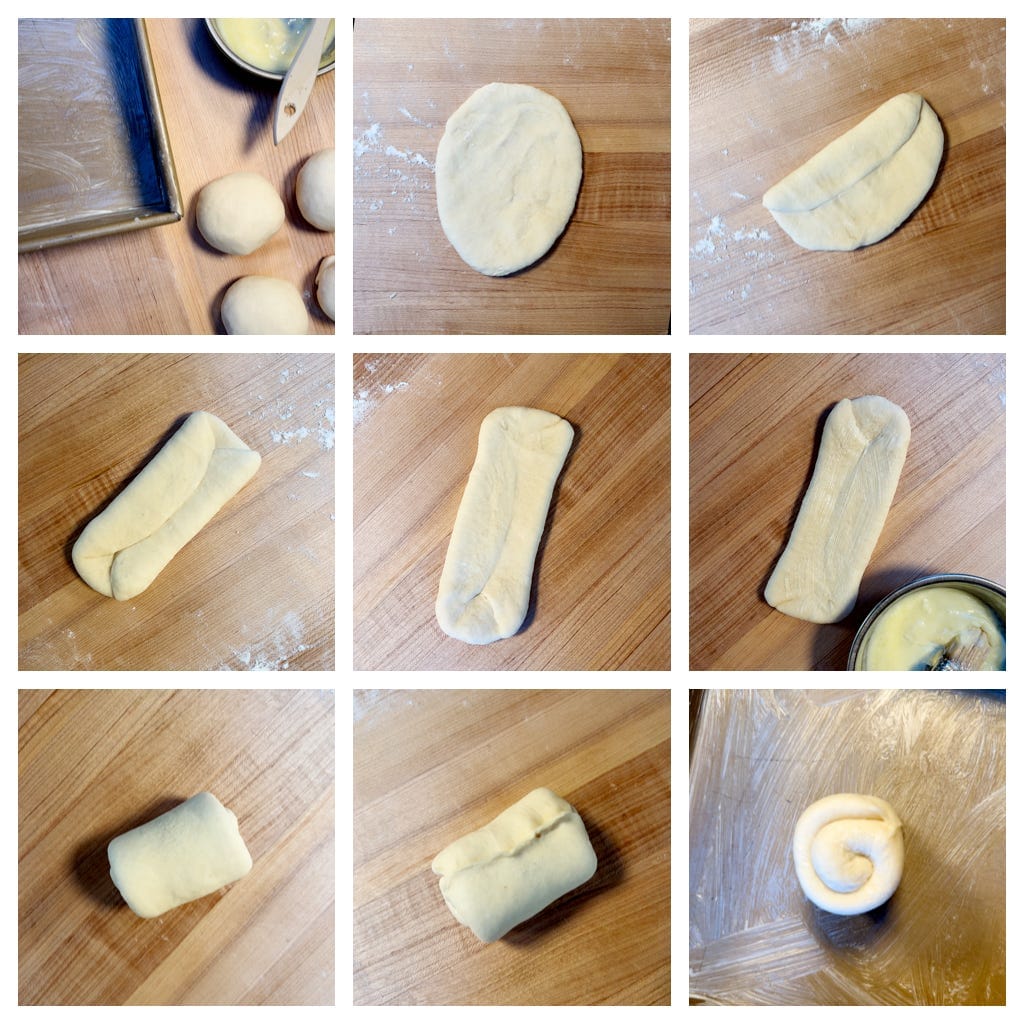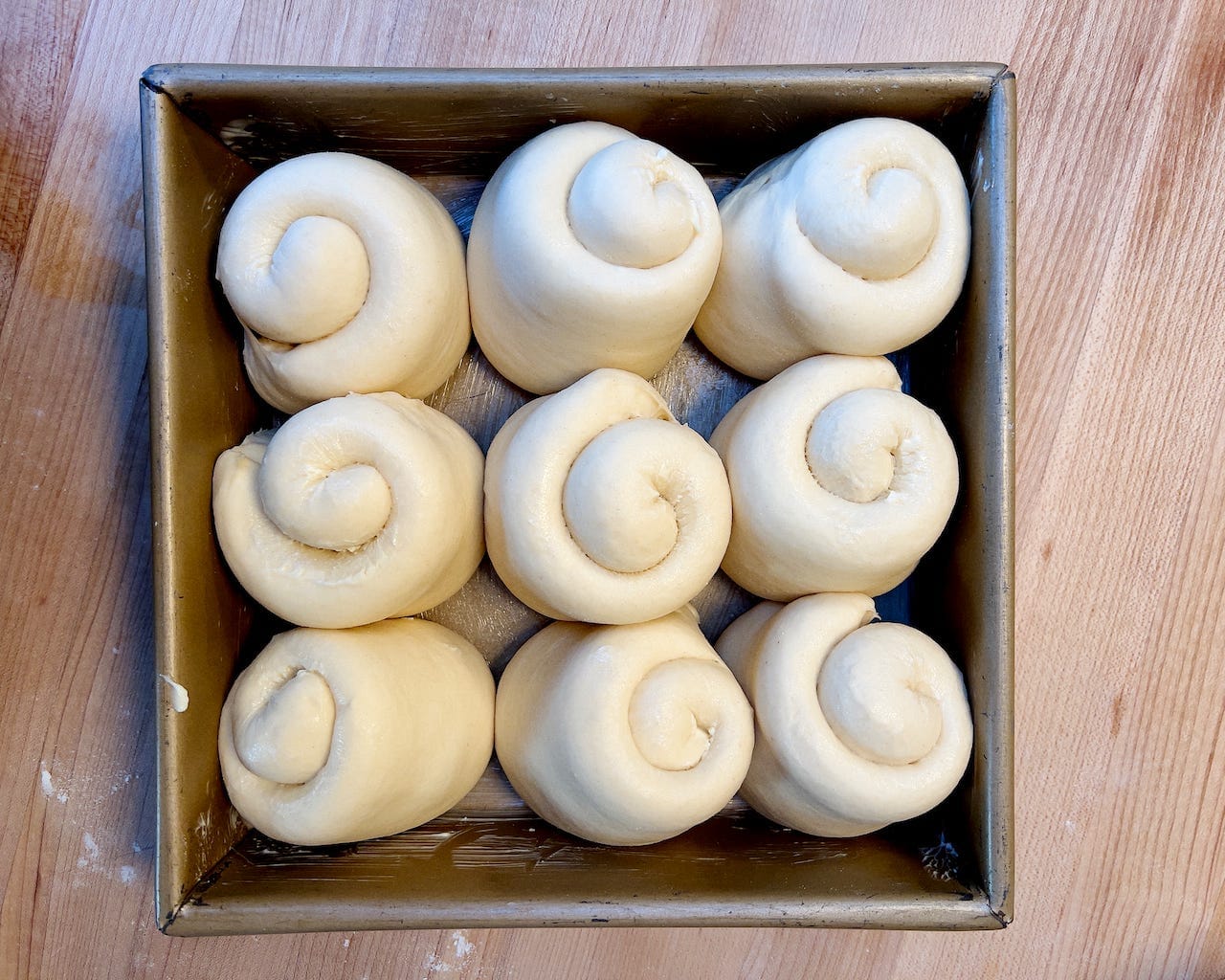Recipe: Parker House Swolls
A Boston classic, made weird

Table of Contents
This recipe was something I created the other day, after having had a particularly nice Parker House roll at Puritan Oyster Bar here in Cambridge. The Puritan buns were fluffy and buttery and delicious, but just shaped like rolls, which isn’t very traditional. The extra joy of a Parker House roll is how the buttered and folded-over dough pulls apart where the butter was applied, and these lacked that. But I don’t love the Parker House shape—a round of dough patted flat and then folded in half—I find it kind of boring, and also it’s not meant to be baked snuggled together in a pan like the sorts of dinner rolls I prefer.
So I decided to make something I came to call Parker House swolls, since they are swirled rolls. I make them just like the traditional ones, but shape the dough into strips, add butter, and spiral them. They are very good, the sort of thing you can inhale half a pan of before you realize what you have done.

—Andrew
Parker House Swolls

Parker House Swolls874KB ∙ PDF fileDownloadDownload
Makes 720g dough, for nine 80g swolls
- Mochi aka glutinous or sweet rice flour is much preferable to bread flour for the scald (it’s much less stiff and slows staling slightly better). If you cannot find it, you can use bread flour instead.
- The overnight cold proof is optional, but adds flavor and convenience. (All of my enriched doughs have this, and, honestly, I always do it this way.)
- Either way, chilling the dough before shaping makes the sticky dough easier to handle and is very helpful.
OVERALL FORMULA
bread flour 90%
mochi flour 10%
sugar 10%
milk 66%
unsalted butter 13%
instant yeast 1%
salt 1.7%
SCALD
40g bread or mochi (glutinous rice) flour
40g sugar
150g milk
57g (4 tablespoons) unsalted butter, cut into 4 pieces, cold
DOUGH
120g milk
4.5g (1 teaspoon) instant yeast
335g bread flour
7g (1 1/4 teaspoons fine) salt
BUNS
2 to 3 tablespoons unsalted butter, softened
~1/2 teaspoon flake finishing salt (e.g. Maldon)
SCALD: Place the milk, flour, and sugar in a medium bowl and whisk to combine. Transfer to a small nonstick skillet and heat over medium heat, stirring constantly with a rubber spatula until it takes on a glossy, thick, roux-like consistency (If you have an instant-read thermometer, the scald will be complete once it reaches 160˚F, do not cook it further than this.) Transfer the mixture to the bowl of a stand mixer, whisk in butter until melted and incorporated, cover loosely, and allow to cool to room temperature, about 20 minutes.
DOUGH: Add the remaining milk and yeast to the scald and whisk until uniform. Add the flour and mix on low speed until the dough just comes together and no dry flour remains, 2 to 5 minutes. Cover loosely and let sit for 30 minutes.
Add the salt and mix on low speed until thoroughly incorporated, about 1 minute. Increase speed to medium, and mix until the dough just starts to clear the sides of the bowl (it will remain webby, sticky, and attached to the bottom of the bowl), 8 to 12 minutes.
Remove the bowl from the stand mixer, cover loosely, and let sit at 75˚F (24°C) until puffy and about 1 ½ times in volume, 60 to 120 minutes, folding the dough with lightly-moistened hands at 30 and 60 minutes.
Cover the dough tightly and refrigerate for at least 2 hours and up to 24. (If chilling for more than 2 hours, remove the dough from the fridge 30 minutes or or so before dividing and shaping to let it warm slightly.)
BUNS: Brush the insides of an 8- by 8-inch cake pan with butter and set aside. Transfer the dough to a lightly-floured counter and divide into 9 pieces of about 80g each. Shape each into a tight round. Cover loosely and let sit for 20 minutes.

Flour the countertop lightly and turn each ball of dough seam side up. Using a rolling pin, roll each ball into a 5- by 4-inch long oval. Fold the long sides of the oval into the center one at a time to form a 2 inch-wide strip. Using the pin, roll the strip into a 6- by 2 1/2 inch rectangle. Brush all but the last half inch off the top of the strip with butter. Starting with the buttered end, roll the strip up like a carpet. Pinch the end to seal it to the roll and place the roll spiral-side down in the center of the prepared pan. Repeat with the remaining dough balls, spacing them evenly apart in the pan.

Cover the pan loosely and allow to proof until the tops of the buns are level with the top of the pan and have merged with one another, 60 to 120 minutes.

BAKE: Thirty minutes before the buns are ready to bake, set an oven rack to the lower-middle position and heat the oven to 350˚F (176˚C).
Transfer the pan to the oven and bake until the tops of the buns are deep golden brown, 18 to 22 minutes.

Transfer the pan to a cooling rack. Brush the exposed surfaces of the buns with butter and sprinkle lightly with the flake salt. Allow the buns to cool for 5 minutes before removing from the pan. Serve warm or room temperature. (If not serving within 3 hours of baking, store in an enclosed container.)
wordloaf Newsletter
Join the newsletter to receive the latest updates in your inbox.




